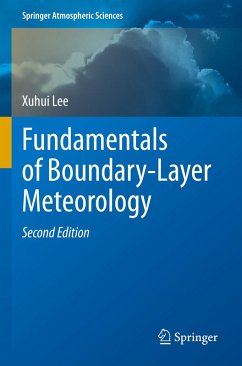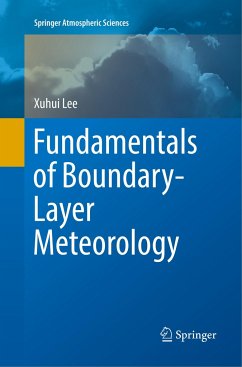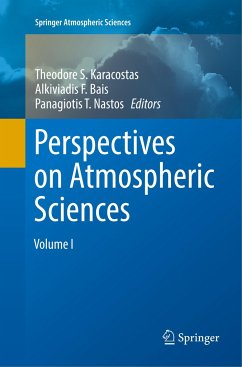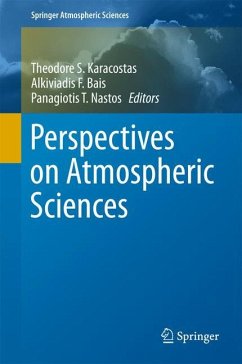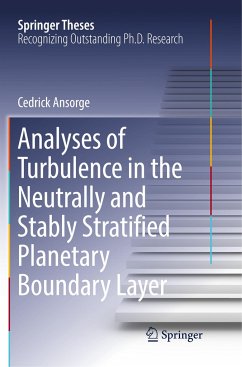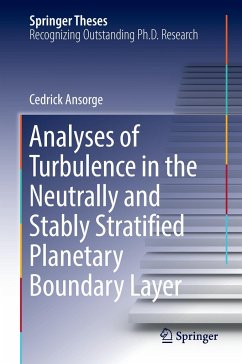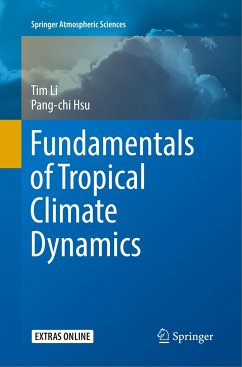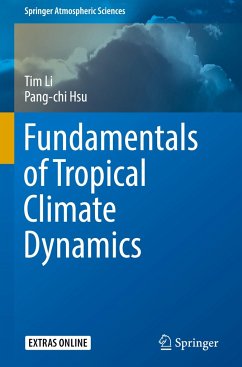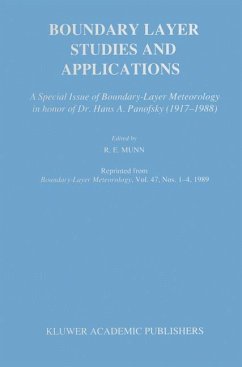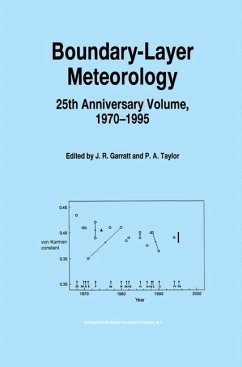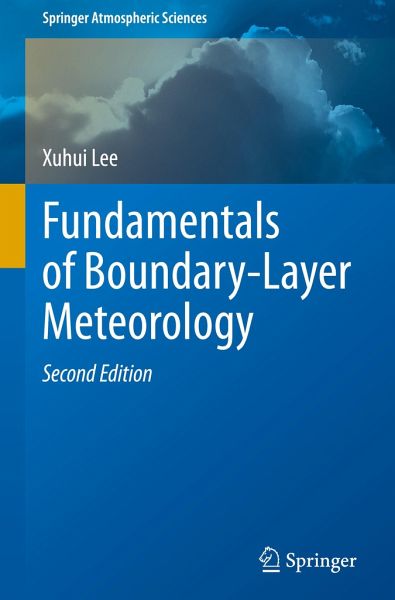
Fundamentals of Boundary-Layer Meteorology
Versandkostenfrei!
Versandfertig in 6-10 Tagen
91,99 €
inkl. MwSt.
Weitere Ausgaben:

PAYBACK Punkte
46 °P sammeln!
This book is filled with didactic elements such as exercises, charts and case study examples. It introduces a set of fundamental equations that govern the conservation of mass (dry air, water vapor, trace gases), momentum and energy in the lower atmosphere. It offers students an up-to-date literature overview and introduces theory to a field that is mostly empirical in nature. Dedicated to undergraduate or graduate students in atmospheric sciences and meteorology, this textbook compels students about the importance of the subject and its application.Simplifications of each of the equations are...
This book is filled with didactic elements such as exercises, charts and case study examples. It introduces a set of fundamental equations that govern the conservation of mass (dry air, water vapor, trace gases), momentum and energy in the lower atmosphere. It offers students an up-to-date literature overview and introduces theory to a field that is mostly empirical in nature. Dedicated to undergraduate or graduate students in atmospheric sciences and meteorology, this textbook compels students about the importance of the subject and its application.
Simplifications of each of the equations are made in the context of boundary-layer processes. Extended from these equations the author then discusses a set of issues fundamental to boundary layer meteorology, including (1) turbulence generation and destruction, (2) force balance in various portions of the lower atmosphere, (3) canopy flow, (4) tracer diffusion and footprint theory, (5) principles of flux measurement and interpretation, (6) models for land evaporation, (7) models for surface temperature response to land use change, and (8) boundary layer budget calculations for heat, water vapor and carbon dioxide. This second edition is enhanced with new materials on the marine boundary layer and on three contemporary topics: the urban boundary layer, the polluted boundary layer and the cloudy boundary layer in a changing climate. Problem sets are supplied at the end of each chapter to reinforce the concepts and theory presented in the main text. This volume offers the accumulation of insights gained by the author during his academic career as a researcher and teacher in the field of boundary-layer meteorology
Simplifications of each of the equations are made in the context of boundary-layer processes. Extended from these equations the author then discusses a set of issues fundamental to boundary layer meteorology, including (1) turbulence generation and destruction, (2) force balance in various portions of the lower atmosphere, (3) canopy flow, (4) tracer diffusion and footprint theory, (5) principles of flux measurement and interpretation, (6) models for land evaporation, (7) models for surface temperature response to land use change, and (8) boundary layer budget calculations for heat, water vapor and carbon dioxide. This second edition is enhanced with new materials on the marine boundary layer and on three contemporary topics: the urban boundary layer, the polluted boundary layer and the cloudy boundary layer in a changing climate. Problem sets are supplied at the end of each chapter to reinforce the concepts and theory presented in the main text. This volume offers the accumulation of insights gained by the author during his academic career as a researcher and teacher in the field of boundary-layer meteorology





